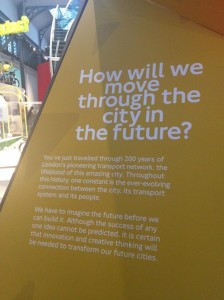By MA Design Studies Candidate, Jhen-Yi Lin
How might design provide a new approach to inform public policy planning and implementation? And what brings designers and public policy makers to sit at the same table and discuss social issues?
On September 4, 2014, I presented an academic paper “Design Capabilities in the Public Sector” at 19th Design Management Conference, which was held in London by Design Management Institute. With its definition expanded by the knowledge of design history, political science, sociology, anthropology and management, it appears that the meaning of design is changing and widening from creating an artifact to using artifacts in a broader context to drive behavioral change. In the first year of Design Studies program, I was challenged to rethink everything in my everyday life, from a chair, a potato-peeler, an iPhone, to a subway map diagram and the natural and artificial world that we all live within. I was challenged to depart from tangible and familiar forms of objects and dive into intangible and unfamiliar internal structures and intentions that were embedded in objects.
In trying to understand the essence of design, my research has led me to think about the relationship between design and public policy. Not just public policy for the design industry, but more importantly, the design of public policy, public organizations, city-level systems and management, that, on one hand are so intangible, yet on the other, so close to our everyday life. The paper I presented in London—based on thinking design at a systems level, human- centered value and design capabilities—tries to explore a common ground, to bring design communities and public policy makers to work together to improve social causes and address long-term public policy effectiveness.
Approaching public policy as design artifact provides a new avenue to rethink capabilities of design. I used the Transport for London as one of case studies and illustrate four attributes that design artifacts and public policy share. Both public policy and design artifacts exist within constraints and boundaries, form their task structures hierarchically, rely heavily on negotiation between process and incommensurability, and synthesize their outcomes from components and resources. In this case, the transport system made a good example to illustrate how public service has been designed to meet everyday needs. Everything from the tube map, street signs on the road, different mechanisms to guide pedestrians and vehicles—just to name a few— jointly provide a synthesis to carry millions of passengers across the city every day.

